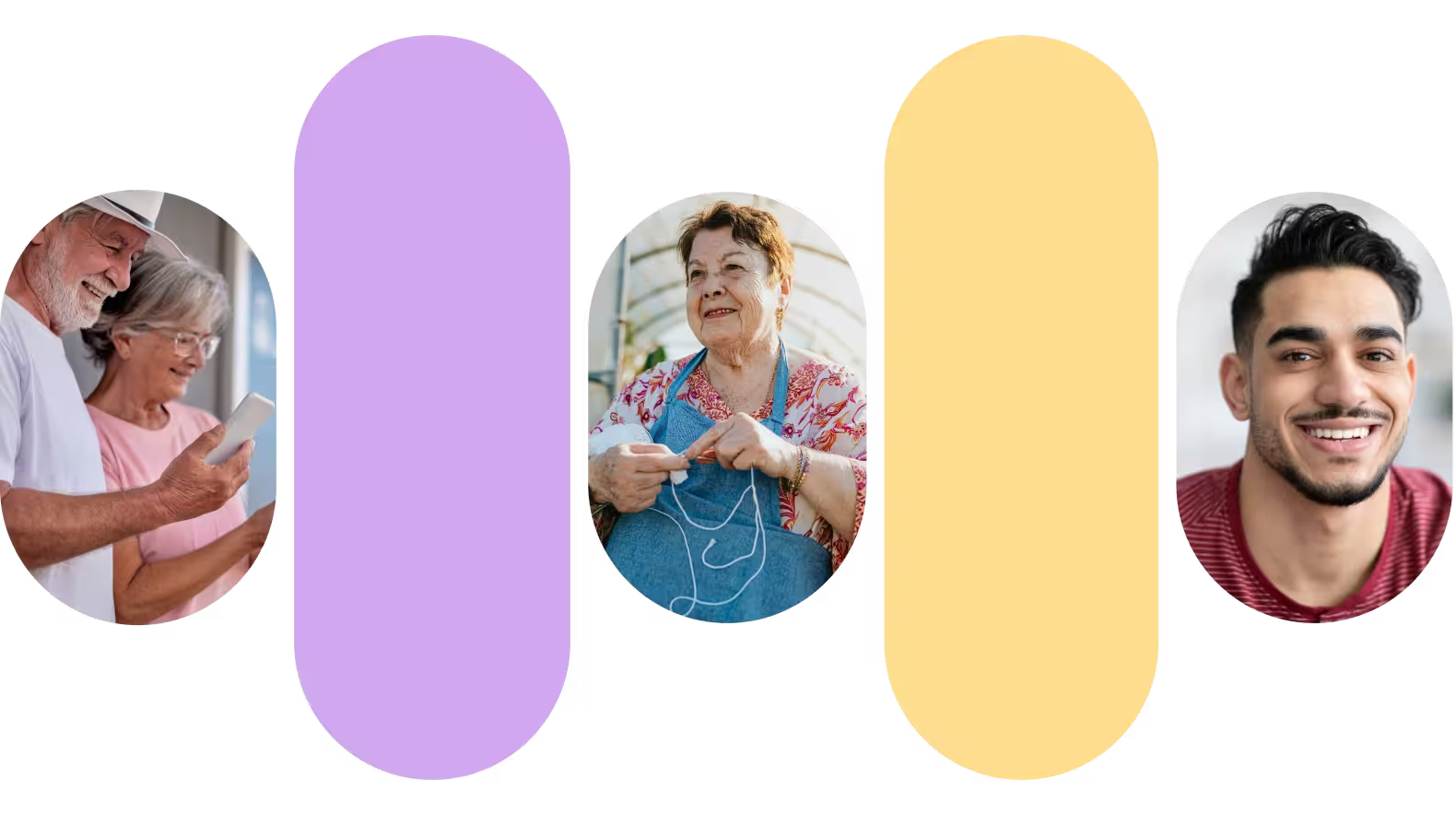Celebrating Deaf Creators: Artists Breaking Barriers
Dive into the amazing world of deaf culture art expression and discover its types and the people who create it. Click here to read more!
%20(1).webp)
Whether painting, drawing, sculpture, or even appreciating beautiful landscapes, art can truly touch our hearts and change our lives for the better. One of the best things about art is that it’s a powerful form of self-expression. It’s an outlet to share our experiences, thoughts, and feelings. Deaf Culture Art is no diffrent. With deaf culture art, the focus is on the deaf community’s history, identities, oppression, diversity, and experiences alongside American Sign Language (ASL).
In this article, we’ll explore deaf culture art and introduce some famous deaf artists.
Exploring Deaf Culture Art Expression
What is De’VIA?
Art that examines and expresses the Deaf Experience from a cultural, linguistic, and intersectional point of view falls under the genre of De’VIA. That stands for Deaf View/Image Art (sign: DEAF-look-at-palm-ART). De’VIA was established in 1989 when a group of artists at the Deaf Way Arts Festival at Gallaudet University in Washington, D.C., gathered to discuss Deaf culture and art. The term De’VIA is an acronym:
The 4 Elements of De’VIA:
De Deaf & Deaf-Blind Expression of Affirmation, Resistance, and Liberation
V View of how Deaf & Deaf-Blind experience the world
I Images/Motifs/Symbols of the Deaf Experience
A Art, Activism, Aesthetics, and Authentic Expressions of the Deaf Experience
There is an annual De’VIA contest for deaf and hard-of-hearing K-12 students.
Types of Deaf and ASL Art
Paintings and Drawings
Artists often incorporate ASL signs and handshapes into their medium. Images of ears and eyes also often appear in artistic representation.
Sculpture and Installation
Other artists create exhibits that can turn into tactile art in three-dimensional space.
Performance
Some artists turn to storytelling using ASL to convey powerful emotions through their body movements and facial expressions. Handshape stories and deaf jokes are often told.
- ABC Stories – ABC stories use only the handshapes of the manual alphabet in order from A to Z.
- Number Stories – Number stories are like ABC stories but use numbers instead of letters in a pattern.
- One-Handshape Stories – One-handshape stories use only one handshape throughout the entire story.
Film
Movies like “Children of a Lesser God” (1986), “The Shape of Water” (2017), “A Quiet Place” (2018), and “CODA” (2021) all brought the beauty of ASL and deaf characters to the forefront.
Social Media
Deaf artists have seized upon the popularity of Instagram and TikTok to share their talent with their audiences.
Famous Artists: Past & Present
Did you know Ludwig van Beethoven, one of the most famous composers who ever lived, was deaf? The artists I mention below bring a unique perspective, one deeply rooted in and associated with their experiences growing up in the deaf community.
Nancy Rourke
Deaf since the age of 6, Nancy grew up in San Diego as an emerging artist. She was mainstreamed and learned ASL in college. Her paintings and graphic designs use bright and vivid colors to reflect the deaf's struggles to develop strong identities. Yellow means hope and her use of blue represents audism. Much of her inspiration came from Paddy Ladd’s book Understanding Deaf Culture in Search of Deafhood.


Chuck Baird
When one thinks of prominent deaf artists, the name of the late American Chuck Baird (1947-2012) often comes to mind. He is known as one of the founders of the De’VIA movement. He participated in dozens of exhibits, created several commissioned murals, and served as an artist in residence at over thirty deaf schools. If you go to some of the country’s deaf K-12 institutions like Indiana School for the Deaf, Arizona State Schools for the Deaf and the Blind, or Colorado School for the Deaf and Blind, you can see his artwork still there.


Christine Sun Kim
She has drawn a connection between American Sign Language and music. You can see her TED Talk here. She currently has exhibits in New York City at both the Museum of Modern Art (MOMA) and the Queens Museum, as well as the Art Institute of Chicago, among countless more across the country.


Sean Forbes
Hailing from the Motor City, he is a rapper, activist, and speaker who uses music to champion deaf awareness. He co-founded D-PAN, the Deaf Professional Arts Network, a non-profit organization that promotes accessibility and awareness in the arts and media industries.

Bernard Bragg
Bernard was a deaf performer, writer, director, author, and artist. He founded The National Theater of the Deaf and is critically acclaimed for his contributions to deaf performing culture.

Clayton Valli
He is the first person ever to receive a doctorate in ASL poetry. He was also the first to identify the features of ASL poetry as a literature genre in its own right.

Conclusion
In a way, deaf culture art validates the feelings many deaf people experience, and their stories are shared with the world. The pieces out in the world work towards breaking down barriers and fostering appreciation and understanding. The above artists are only a tiny sample. You can view many more deaf artists on the Deaf Art website, and we hope their stories inspire you.














